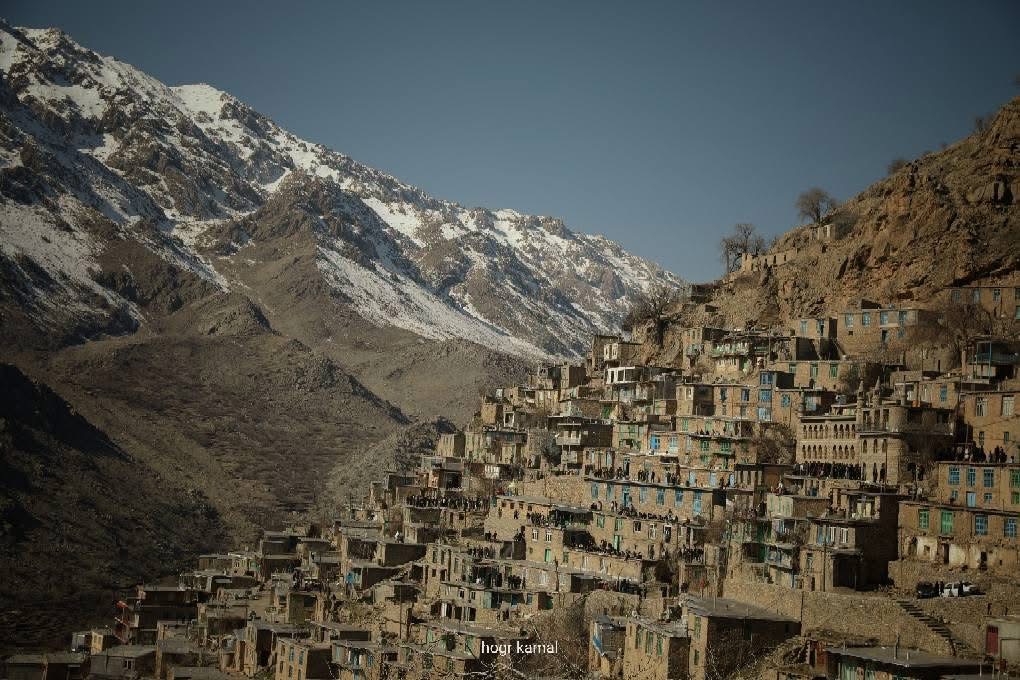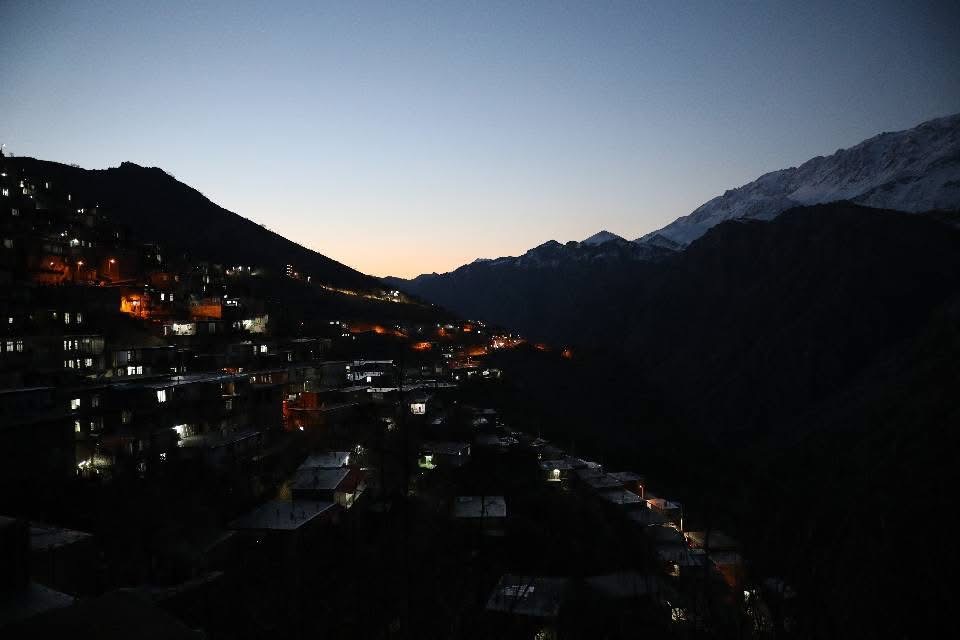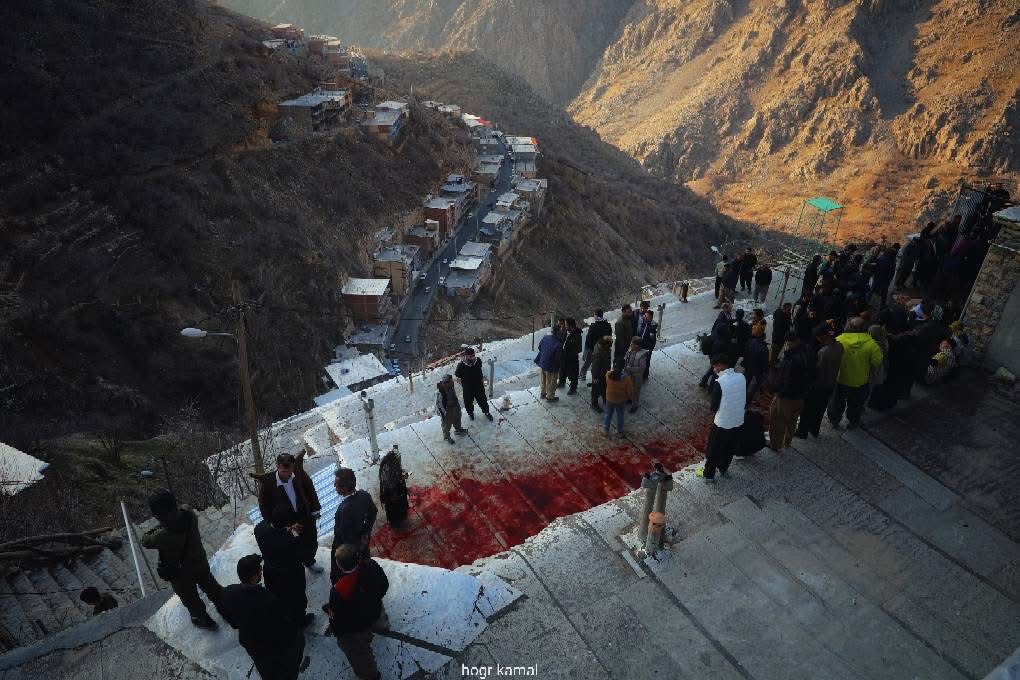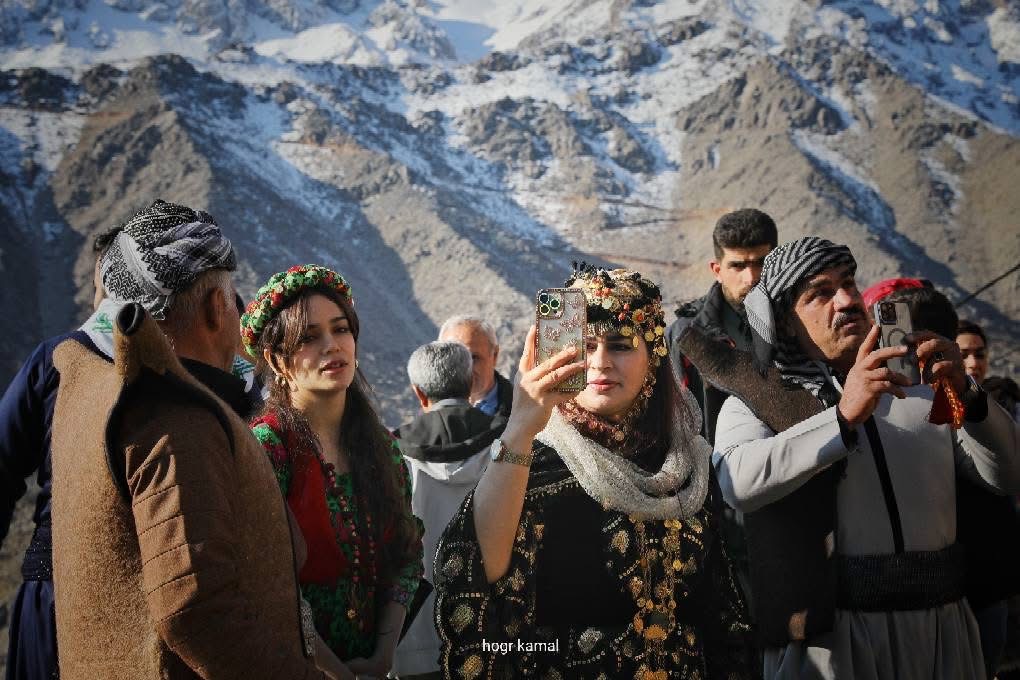The ancient ritual of “Pir Shalyar’s Wedding,” one of the oldest traditions in the Hawraman city in Kurdistan province of Iran, began on Wednesday, January 31, 2024, and will continue for three days until Friday, February 2. This annual winter ceremony, celebrated in mid-January, has become a significant cultural event in Hawraman and Kurdistan, attracting locals and tourists alike. The festival, deeply rooted in local folklore, commemorates the marriage anniversary of Pir Shalyar, a revered mystic, and features unique rituals, music, and communal feasts.

The Origins and Significance of Pir Shalyar’s Wedding
The “Pir Shalyar’s Wedding” ceremony is a centuries-old tradition in the Hawraman region of Kurdistan province in Iran, believed to be over a thousand years old. It commemorates the marriage anniversary of Pir Shalyar, a mystic who holds a special place in the hearts of the local people. Recognized as an intangible cultural heritage of Iran in 2018, the festival is a vibrant celebration of Hawramani and Kurdish culture, spirituality, and community. The event draws thousands of visitors, including international tourists, making it one of Kurdistan’s most important cultural gatherings.
Pir Shalyar, a revered figure in Hawramani folklore, is said to have possessed extraordinary spiritual powers. His marriage is celebrated not just as a historical event but as a symbol of unity, love, and divine connection. The festival is a testament to the enduring legacy of Pir Shalyar and the deep-rooted traditions of the Kurdish people. It serves as a bridge between the past and the present, allowing younger generations to connect with their heritage.

The Role of the Community in Organizing the Festival
The festival is entirely community-driven, with locals taking full responsibility for hosting guests, managing logistics, and ensuring the smooth running of the event. According to Golan Farzami, Deputy Director of Cultural Heritage in Kurdistan Province in Iran speaking to IRNA, the villagers handle everything from accommodation to traffic management. Despite the large crowds, the community ensures safety and order, with local councils and emergency teams on standby. The festival’s success lies in the collective effort of the villagers, who welcome guests with open arms and traditional Kurdish hospitality.
The preparation for the festival begins weeks in advance. Villagers clean and decorate their homes, prepare traditional dishes, and gather supplies for the communal feast. The sense of unity and cooperation is palpable, as everyone contributes to making the event a success. This communal effort is a reflection of the Kurdish spirit, where shared traditions and collective responsibility are deeply valued.

Key Rituals of Pir Shalyar’s Wedding
The festival spans several days and includes a series of unique rituals, each with its own cultural and spiritual significance. These rituals include:
1. “Khabar” (The Announcement):
A week before the main ceremony, the “Khabar” ritual takes place to inform the community about the upcoming festival. Walnuts from Pir Shalyar’s garden are distributed among villagers, and in return, they contribute ingredients like flour, onions, and legumes for the communal feast. This ritual symbolizes the sharing of blessings and the collective participation of the community.
2. “Kooteh Kooteh”:
Five days after “Khabar,” children dressed in warm clothes roam the village, shouting “Kooteh Kooteh” and collecting treats from households. This ritual, reminiscent of Halloween, is a lively and joyous event that brings the community together. The children’s enthusiasm and the villagers’ generosity create a festive atmosphere, highlighting the importance of joy and togetherness in Kurdish culture.

3. “Kalaw Rochini”:
Early in the morning on the day of the main ceremony, children wake the villagers by shouting “Kalaw Rochini” and collecting snacks. This ritual is followed by the preparation of sacrificial animals for the feast. The children’s role in this ritual underscores the intergenerational nature of the festival, where traditions are passed down from one generation to the next.
4. Animal Sacrifice and Feast Preparation:
Animals offered as sacrifices are prepared for the communal meal. The meat is distributed among the villagers, with portions reserved for the less fortunate. The feast, known as “Halushin,” is a traditional dish made with pomegranate seeds, wheat, chickpeas, meat, and onions. The preparation of the feast is a communal activity, with villagers working together to cook and serve the food. This act of sharing and generosity is a core value of the festival.

The Main Ceremony: A Celebration of Music and Dance
The highlight of the festival is the main ceremony, held at Pir Shalyar’s house. The event features traditional Kurdish music, particularly the rhythmic beats of the “daf” (a frame drum), and spiritual chanting. Men and boys form circles, holding hands and dancing in a slow, meditative rhythm. The music and dance create a deeply spiritual atmosphere, with participants and spectators alike immersed in the celebration. The ceremony continues late into the night, with the community coming together to honor Pir Shalyar’s legacy.
The dance, known as “Sama,” is a form of spiritual meditation. Participants move in harmony with the rhythm of the daf, creating a sense of unity and connection. The dance is not just a physical activity but a spiritual experience, where participants feel a deep connection to Pir Shalyar and the divine. The music, performed by skilled daf players, adds to the mystical atmosphere, transporting everyone to a state of spiritual ecstasy.

The Role of Women in the Festival
While the main ceremonies are male-dominated, women play a significant role in the festival’s preparations and communal activities. Women are responsible for cooking the traditional feast and ensuring that the community is well-fed. Although they do not participate in the main rituals, they gather separately for spiritual gatherings and storytelling sessions. The festival also provides an opportunity for women to connect with each other and celebrate their cultural heritage.
Women’s contributions to the festival are invaluable. They prepare the food, decorate the homes, and ensure that everything runs smoothly. Their role highlights the importance of women in Kurdish society, where they are often the keepers of tradition and culture. The festival is a reminder of the strength and resilience of Kurdish women, who play a vital role in preserving their heritage.
The Spiritual and Cultural Impact of Pir Shalyar’s Wedding
Pir Shalyar’s Wedding is more than just a cultural festival; it is a spiritual journey for the participants. The rituals, music, and communal feasts foster a sense of unity and belonging among the villagers and visitors. The festival also serves as a platform for preserving and promoting Kurdish traditions, ensuring that they are passed down to future generations. For many, attending the festival is a deeply moving experience, offering a glimpse into the rich cultural and spiritual heritage of the Hawraman region.
The festival is a celebration of Kurdish identity, spirituality, and resilience. It is a time for the community to come together, reflect on their shared history, and celebrate their cultural heritage. The festival also serves as a reminder of the importance of preserving traditions in a rapidly changing world. By participating in the festival, the Kurdish people reaffirm their commitment to their culture and their connection to their ancestors.
A Timeless Tradition
Pir Shalyar’s Wedding is a testament to the enduring power of tradition and community. Despite the passage of time, the festival has retained its authenticity and continues to draw people from all walks of life. It is a celebration of Kurdish identity, spirituality, and resilience, offering a unique opportunity to experience the rich cultural tapestry of Kurdistan. As the festival grows in popularity, it remains a symbol of the region’s commitment to preserving its heritage and sharing it with the world.
The festival is a reminder of the importance of cultural preservation in a globalized world. It is a celebration of the past, a reflection of the present, and a hope for the future. Through the rituals, music, and communal feasts, the Kurdish people honor their ancestors, celebrate their culture, and pass on their traditions to future generations. Pir Shalyar’s Wedding is not just a festival; it is a living testament to the enduring spirit of the Kurdish people.



